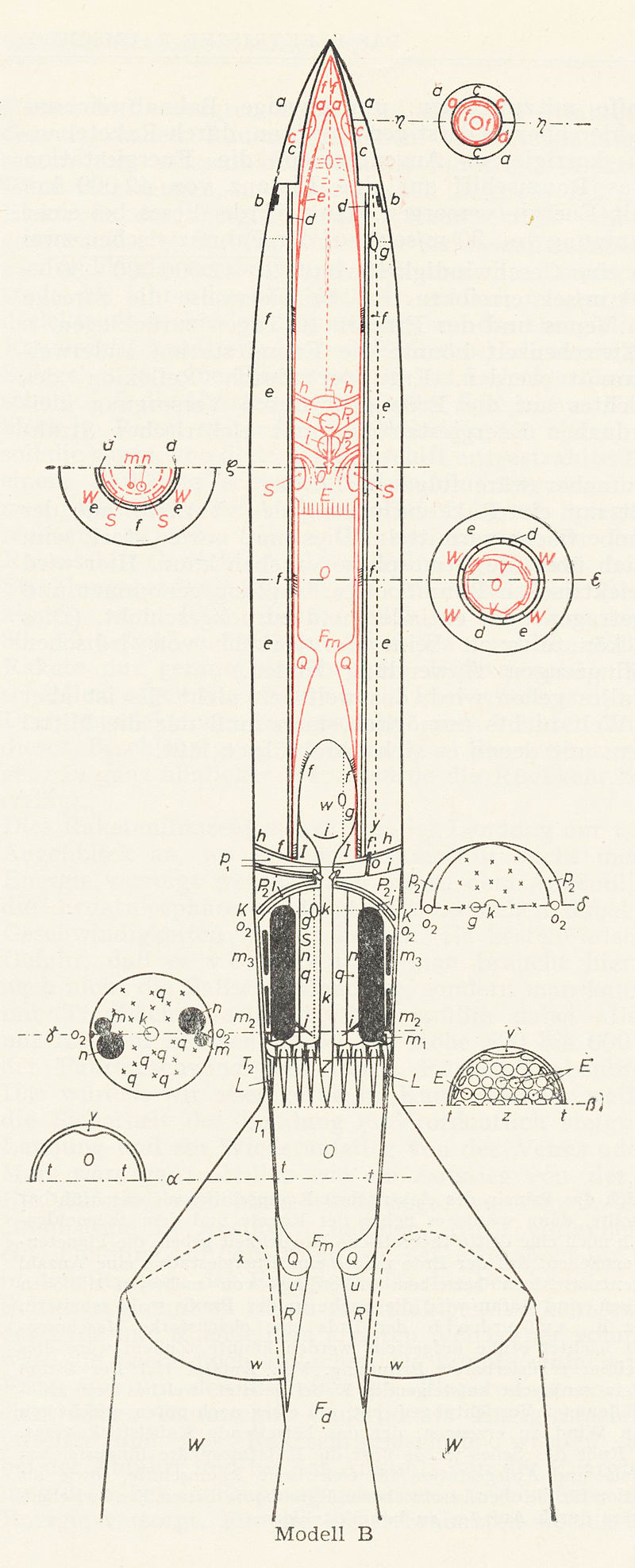Walter Dornberger, 1895-1980

Walter Dornberger, 1895-1980

戦時中、V兵器開発の責任者を務めたドイツ将官。ノルトハウゼン地下奴隷工場の技術主任。イギリス陸軍に戦争犯罪容疑で投獄されるも、のちにア メリカ側に引き渡された。ペーパークリップ作戦では、アメリカ空軍とベル・エアクラフトに雇われる。1950年代後半まで統合参謀本部・ミサイルおよび宇 宙兵器コンサルタントを務める。アメリカ軍の極秘情報取り扱い許可を保有し、国防総省にも頻繁に呼ばれた。
"In April 1930,[6] Dornberger was appointed to the Ballistics Council of the German Army (Reichswehr) Weapons Department as Assistant Examiner to secretly develop[4] a military liquid-fuel[7] rocket suitable for mass-production that would surpass the range of artillery.[8][9] In the spring of 1932, Dornberger, his commander (Captain Ritter von Horstig), and Col. Karl Emil Becker visited the Verein für Raumschiffahrt (VfR)'s leased Raketenflugplatz (English: "Rocket Flight Field") and subsequently issued a contract for a demonstration launch.[4][5] On 21 December 1932, Captain Dornberger watched a rocket motor explode at Kummersdorf while Wernher von Braun tried to light it with a flaming gasoline can at the end of a four meter long pole.[3][4][5]/ In 1933, Waffenamt Prüfwesen (Wa Prüf, English: "Weapons Testing") 1/1, under the Heereswaffenamt (Army Weapons Department), commenced work under the direction of Colonel/Dr. Ing. h. c. Dornberger. Dornberger also took over his last military command on 1 October 1934, a powder-rocket training battery at Königsbrück.[3] In May 1937, Dornberger and his ninety-man organization were transferred from Kummersdorf to Peenemünde.[10] In September 1942, Dornberger was given two posts: coordinating the V-1 flying bomb and V-2 rocket development programs and directing active operations.[11] The first successful test launch of a V-2 was the third test launch on 3 October 1942. In the early morning of 7 July 1943, Dr. Ernst Steinhoff flew[12] von Braun and Major-General Dornberger in his Heinkel He 111 to Hitler's Führerhauptquartier "Wolfsschanze" headquarters and the next day Hitler viewed the film of the successful V-2 test launch (narrated by von Braun) and the scale models of the Watten bunker and launching-troop vehicles:[13]" - Walter Dornberger.
"Along with some other German rocket scientists, Dornberger was
released and brought to the United States under the auspices of
Operation Paperclip, and worked for the United States Air Force for
three years, developing guided missiles. From 1950 to 1965 he worked
for the Bell Aircraft Corporation where he worked on several projects,
rising to the post of Vice-President. He played a major role in the
creation of the North American X-15 aircraft and was a key consultant
for the Boeing X-20 Dyna-Soar project. He also had a role on the
creation of ideas and projects, which, in the end, led to the creation
of the Space Shuttle.[24][25][26] Dornberger also developed Bell's
ASM-A-2, the world's first guided nuclear air-to-surface missile
developed for the Strategic Air Command.[27] Dornberger advised Germany
on a European space program.[28] During the 1950s he had some attrition
with von Braun and was instrumental in recruiting several engineers out
of the Huntsville's team for Air Force projects. The most remarkable of
them was Krafft Ehricke, who later created the Centaur rocket stage and
actively participated in several more Defense projects."- Walter Dornberger.
ドーンベルガーは、他のドイツのロケット科学者たちとともに、「ペーパークリップ作戦」の援助を受けてアメリカに渡り、アメリカ空軍で3年間、
誘導ミサイルの開発に従事した。1950年から1965年まで、ベル・エアクラフト社に勤務し、いくつかのプロジェクトに携わり、副社長まで上り詰めた。
ノースアメリカン航空機「X-15」の開発に大きな役割を果たし、ボーイング社の「X-20ダイナ・ソア」プロジェクトでは主要なコンサルタントとして活
躍した。また、戦略空軍司令部のために開発された世界初の核誘導式空対地ミサイルであるベル社のASM-A-2の開発にも携わlった。1950年代には、
フォン・ブラウンとの関係が悪化し、ハンツビルのチームから何人かのエンジニアを空軍のプロジェクトに採用するのに貢献した。その中で最も注目されたのは
クラフト・エーリケで、彼は後にケンタウルス・ロケットステージを作り、さらにいくつかの国防プロジェクトに積極的に参加した。
++++++++++++
■V-2ロケットの構造(出典:https://goo.gl/dZUbrU)とHermann Oberth, Wege zur Raumschiffahrt (1929)


「1927年に結成されたドイツ宇宙旅行協会は、 宇宙旅行を目指して1929年頃から液体燃料ロケットを研究していた。ヴェルサイユ条約で大型兵器の開発を禁止されていたヴァイマル共和国の陸軍は、 1932年に同協会が開発中の液体燃料ロケットが持つ長距離攻撃兵器としての可能性に注目、ヴァルター・ドルンベルガー陸軍大尉は、資金繰りに悩むアマ チュア研究者だったヴェルナー・フォン・ブラウンら の才能を見抜き、陸軍兵器局の液体燃料ロケット研究所で研究を続けるよう勧誘した。/フォン・ブラウン らはこれに応じて同研究所に参加、1934年12月、エタノールと液体酸素を推進剤とする小型のA2ロケット(質量 500 kg)の飛行実験を成功」(出典:https://goo.gl/dZUbrU)

First rank, from left to right, General Dr Walter Dornberger (partially hidden), General Friedrich Olbricht (with Knight's Cross), Major Heinz Brandt, and Wernher von Braun (in civilian dress) at Peenemünde, in March 1941.
●Dornberger, Walter (1954). V-2. New York: Viking Press./ Dornberger, Walter (1952). V-2, der Schuss ins Weltall: Geschichte einer grossen Erfindung, Esslingen: Bechtle Verlag/ 宇宙空間をめざして : V2号物語 / W.ドルンベルガー著 ; 松井巻之助訳, 岩波書店 , 1967年
| 1 |
発射、1942年10月3日 |
3 |
|
| 2 |
ロケット、ベルサイユ条約、陸軍兵器局 |
23 |
|
| 3 |
第一段階:クムメルスドルフ西部実験所 |
29 |
|
| 4 |
財務省との最初の戦い:どれだけの資金が必要か |
46 |
|
| 5 |
グライワスワルダー・オイエ島:ペーネミュンデ活動開始 |
52 |
|
| 6 |
ヒトラーとロケット |
78 |
|
| 7 |
デーゲンコルプという男 |
83 |
|
| 8 |
有限会社の兵士 |
95 |
|
| 9 |
ヒトラーの重大な夢 |
103 |
|
| 10 |
V1かV2か |
109 |
|
| 11 |
ヒトラーの認可 |
116 |
|
| 12 |
ヒトラーの釈明 |
126 |
|
| 13 |
総統司令部での一夜 |
128 |
|
| 14 |
「あなたの困難というのは、わたしの気に食わない |
132 |
|
| 15 |
作業中のペーネミュンデ |
137 |
|
| 16 |
暗い日 |
177 |
|
| 17 |
燃える夜 |
186 |
|
| 18 |
空中写真に映った小さなT |
205 |
|
| 19 |
ヒトラー決断を誤る |
214 |
|
| 20 |
前線に乗り出してきた一人の権力者 |
219 |
|
| 21 |
ヒムラー戦局を語る |
227 |
|
| 22 |
組織 |
239 |
|
| 23 |
カムラーという危険な男 |
242 |
|
| 24 |
ヒムラーの新しい反撃 |
245 |
・ハンス・カムラー(Hans Friedrich Karl Franz Kammler, 1901-1945) |
| 25 |
特別監督官、カムラー博士 |
255 |
|
| 26 |
最後のとき、失敗に対する遮二無二(しゃにむに)の苦闘 |
260 |
|
| 27 |
宇宙空間への飛行 |
275 |
|
| 28 |
ペーネミュンデに対する賛否 |
282 |
|
| 29 |
もっとむずかしい決定 |
287 |
|
| 30 |
ハイデクラウトの発射場 |
293 |
|
| 31 |
いろいろな特別開発 |
298 |
|
| 32 |
戦後第一回の党大会にV2を |
307 |
|
| 33 |
ドルンベルガー機動班:すでに手遅れ |
313 |
|
| 34 |
ドイツにおける神々のたそがれ |
321 |
|
リンク
文献
その他の情報
Copyleft, CC, Mitzub'ixi Quq Chi'j, 1996-2099
Do not paste, but
[Re]Think our message for all undergraduate
students!!!